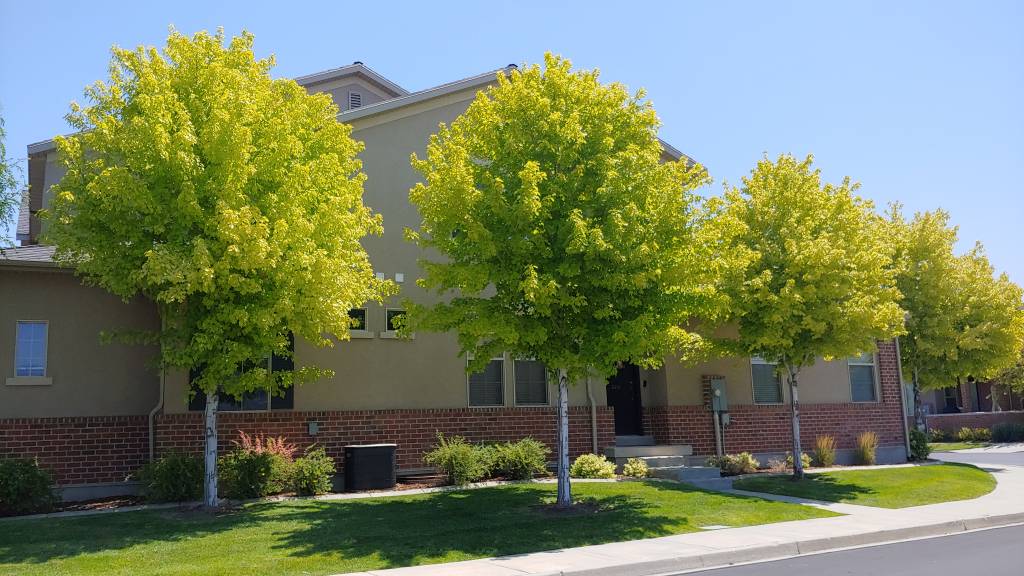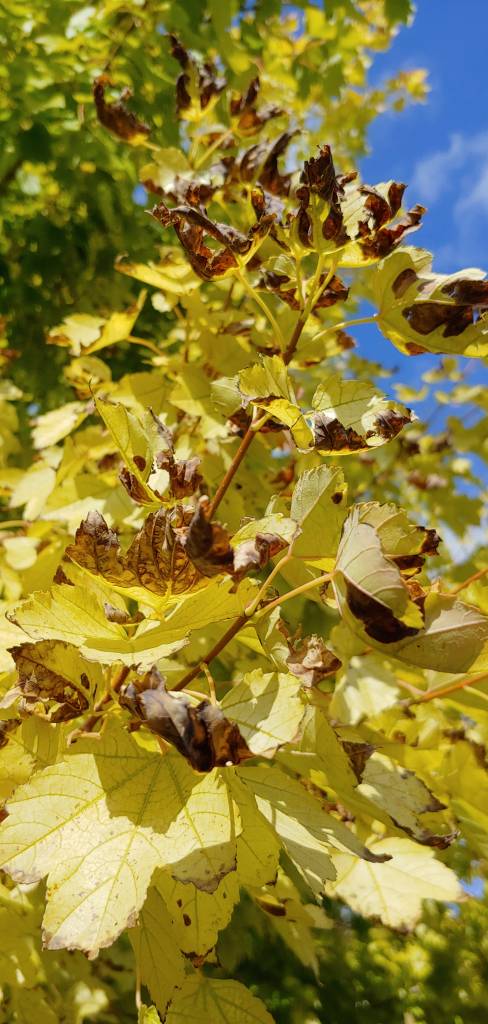What is iron chlorosis and what causes it?
Iron chlorosis is caused by the trees inability to obtain enough iron from the soil. This occurs when there is either not enough iron in the soil, or the iron in the soil is unavailable. Iron becomes unavailable when the soil pH level is high, which causes the iron to become insoluble and difficult for many plants to absorb. Iron is an important nutrient needed for chlorophyll production. A symptom of iron chlorosis is smaller, yellow leaves with dark green veins, which means there is a decrease in chlorophyll. With severe chlorosis, the leaves can turn from white to brown and there can be some twig dieback.
The first leaves on the tree may appear normal size with some yellowing, however the later leaves will be smaller and much more yellow. Also, this can occur on only one branch, half of the tree, or the entire tree. If iron chlorosis tends to be a recurring problem, it could lead to the death of the tree.
In Utah, silver maple, red maple, red oak, river birch, tuliptree, sweetgum, flowering pear, and flowering plum are trees that commonly have problems with iron chlorosis, but it is not limited to these trees. One thing to note is that there are other causes of yellowing such as watering problems, herbicide damage, and other mineral deficiencies.
What can I do to control iron chlorosis?
Liquid soil drench – the iron is typically mixed with fertilizer and applied as a soil drench around the root zone. Using specific types of iron, like iron chelate, adds nutrients to the soil that is available to the roots of the plant for absorption. Other micronutrients can be added when necessary. This application is best performed in the spring, but can be done later in the year if symptoms begin to develop or return.
Trunk injection – the iron is injected directly into the trunk of the tree by first drilling holes into the trunk. Then cartridges, capsules, or I.V. Tubing systems are used to allow the iron to flow into the xylem – the trees water transport system. This type of treatment has a longer lasting effectiveness.


